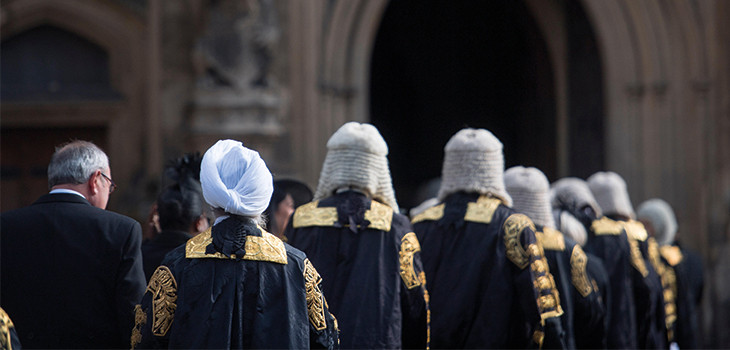
In July 2021, the Law Society issued a press release following the publication of the latest judicial diversity statistics. These, it said, ‘clearly demonstrate a significant disparity in outcomes for Black, Asian and minority ethnic applicants and solicitors’. The society’s president, I Stephanie Boyce, added ‘as members of the Judicial Diversity Forum, we welcome the shared commitment that has been made to the creation of an action plan to tackle the clear problems with representation on the bench’.
Falling short?
The Constitutional Reform Act 2005 drastically altered the method of appointing judges by giving wide responsibility to the new Judicial Appointments Commission (JAC), which since then has controlled the selection process. Section 63 of the Act says selection must be only on merit. This was modified in 2013 to allow one of two candidates of equal merit to be preferred ‘for the purpose of increasing diversity’. Those appointed also have to be of good character. Otherwise, apart from a duty to ‘have regard to the need to encourage diversity in the range of persons available for selection’, the process itself was left largely to the discretion of the JAC.
Yet 16 years later, especially in the higher courts, diversity falls far short of that in the population as a whole. The proportion of black judges has since 2014 remained at only 1%. Only four former solicitors sit in the higher courts.
The Judicial Diversity Forum brings together a range of organisations and individuals, including the Lord Chancellor, the chairs of the JAC and Bar Council, and the presidents of the Law Society and the Chartered Institute of Legal Executives. The action plan referred to by the president of the Law Society is the ‘Judicial Diversity and Inclusion Strategy’ first published on 5 November 2020.
Now, one year later, it has been updated with a foreword by the Lord Chief Justice, Lord Burnett, who himself is obliged by the Crime and Courts Act 2013 ‘to take such steps as he considers appropriate for encouraging judicial diversity.’
The strategy has the following core objectives:
- ‘Creating an environment in which there is greater responsibility for and reporting on progress in achieving diversity and inclusion.
- Supporting and building a more inclusive and respectful culture and working environment within the judiciary.
- Supporting and developing the career potential of existing judges.
- Supporting greater understanding of judicial roles and achieving greater diversity in the pool of applicants for judicial roles.’
The focus of the strategy is thus on encouraging diversity in the pool of applicants, improving equal treatment of those already serving as judges, and persuading those best qualified to apply. These aims are necessary and need to be pursued with vigour.
But how are the ‘best qualified’ identified? The strategy pays little attention to the selection process itself. Its fairness has been taken for granted. Yet, however strong the commitment to diversity, it cannot be achieved without a fair selection process.
Merit test is subjective
Appointments are made or recommended by selection panels appointed by the JAC. These must include at least one judge and one lay member. They must select on merit; but how do they recognise it? The JAC has tried breaking it down into a list of qualities: intellectual capacity, legal knowledge, integrity, fairness, authority, communication skills, and efficiency. Assessing, and, especially, weighing the relative extent to which each candidate possesses them, is a highly subjective exercise. How far are the selectors influenced by stereotyped assumptions about what a judge should look like and what career path best prepares them for the role?
Past appointments to the senior judiciary have leaned heavily on an image of the judge as a white male, public school and Oxbridge educated barrister who ascends as if by natural entitlement to the bench after a successful career as an advocate in the courts. Solicitors and minority applicants do not fit that image, but they may have other forms of experience which are just as relevant to the actual work that a judge has to do. Managerial and negotiating experience may be more often found among solicitors. Advocacy skills should not be prioritised; the partisan role of the advocate is the very opposite of judicial impartiality. Yet those appointed are still mainly white barristers. More women have been chosen recently, but most of them in other respects are in the traditional mould.
The JAC’s website announces recent appointments to the High Court and to the role of deputy High Court judge. Of the six High Court judges appointed in September and October 2021, all are white barristers—five male and one female—and four are graduates of Oxford or Cambridge and two of London universities.
The ability of any of those selected to perform their appointed tasks is not in doubt, but the imbalance in favour of white barristers is stark. This imbalance has persisted despite the doubtless sincere commitment to diversity by legislators and the leaders of the legal profession.
Yet there is a chink of light in the remarks made by Lord Burnett at his annual press conference on 23 November. Having acknowledged that judicial diversity is ‘a complicated business requiring more than a recital of headline statistics’ he confirmed that work is ongoing with the JAC to review and improve selection processes. The headline statistics may not be the only concern, but they will be a vital measure of the success or failure of the diversity endeavour.
Sir Geoffrey Bindman QC, NLJ columnist & senior consultant, Bindmans LLP.












